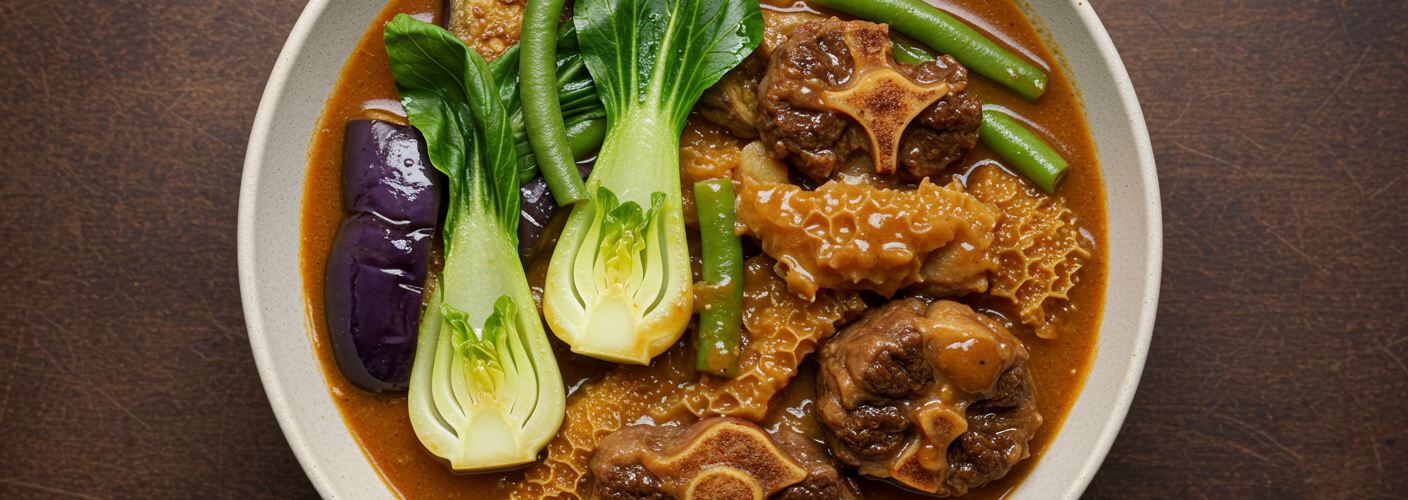Kare-Kare is a beloved Filipino dish celebrated for its unique flavor profile and rich cultural history. This hearty stew is characterized by its luscious, thick peanut sauce, which sets it apart from other dishes in the vibrant tapestry of Filipino cuisine. Originating from the provinces of Pampanga and Batangas, Kare-Kare has become a staple in Filipino households and restaurants alike, cherished for both its taste and its role in communal dining.
At its core, Kare-Kare is typically made with a variety of meats, with oxtail being the most traditional choice. However, variations abound, including beef tripe, pork hocks, and even seafood options for the adventurous palate. The meat is simmered to tender perfection, allowing it to soak up the deep flavors of the broth and the rich peanut sauce. This sauce is the heart and soul of Kare-Kare, made from ground peanuts or peanut butter, combined with toasted rice, and thickened to a velvety consistency.
One of the delights of Kare-Kare is its adaptability; home cooks often add an assortment of vegetables, which not only enhance the dish’s flavor but also add a vibrant color contrast. Common vegetables include eggplant, banana hearts (puso ng saging), and string beans (sitaw). These ingredients are crucial as they complement the rich sauce and provide a satisfying balance of textures.
Kare-Kare is traditionally served with a side of bagoong, fermented shrimp paste, which may be enjoyed on the side or incorporated into the stew itself. The salty and umami notes of bagoong work in perfect harmony with the creamy peanut sauce, elevating the dish to new heights. This combination highlights the Filipino approach to balancing flavors—what may seem like a simple stew transforms into a culinary experience when enjoyed with its recommended accompaniments.
While Kare-Kare is often associated with special occasions and celebrations, its homey feel makes it a beloved weekday meal as well. Families gather around the table to enjoy this stew, fostering a sense of togetherness and community. Preparing Kare-Kare can be a labor of love, requiring time to simmer the meat and to concoct the thick peanut sauce. However, many find the effort rewarding, as the result brings comfort and nostalgia, connecting them to their roots and traditions.
For those looking to explore Kare-Kare at home, there are countless recipes available, each with its own twist. Some cooks opt for a quicker version, using store-bought peanut butter, while others honor tradition by grinding their own peanuts and incorporating various spices. Regardless of the method used, the joy of making Kare-Kare lies in the sharing of food and the stories that come with it.
In summary, Kare-Kare is more than just a dish; it’s a culinary celebration of Filipino culture, rich in flavors and history. From its sumptuous peanut sauce to the tender meat and vibrant vegetables, this stew embodies comfort and tradition. Whether enjoyed at a family gathering or a festive celebration, Kare-Kare continues to warm hearts and fill bellies, reminding everyone of the importance of sharing a meal together. So, next time you’re in the mood for something satisfying and rich, consider giving Kare-Kare a try, and savor the delightful taste of this Filipino classic.




Add comment